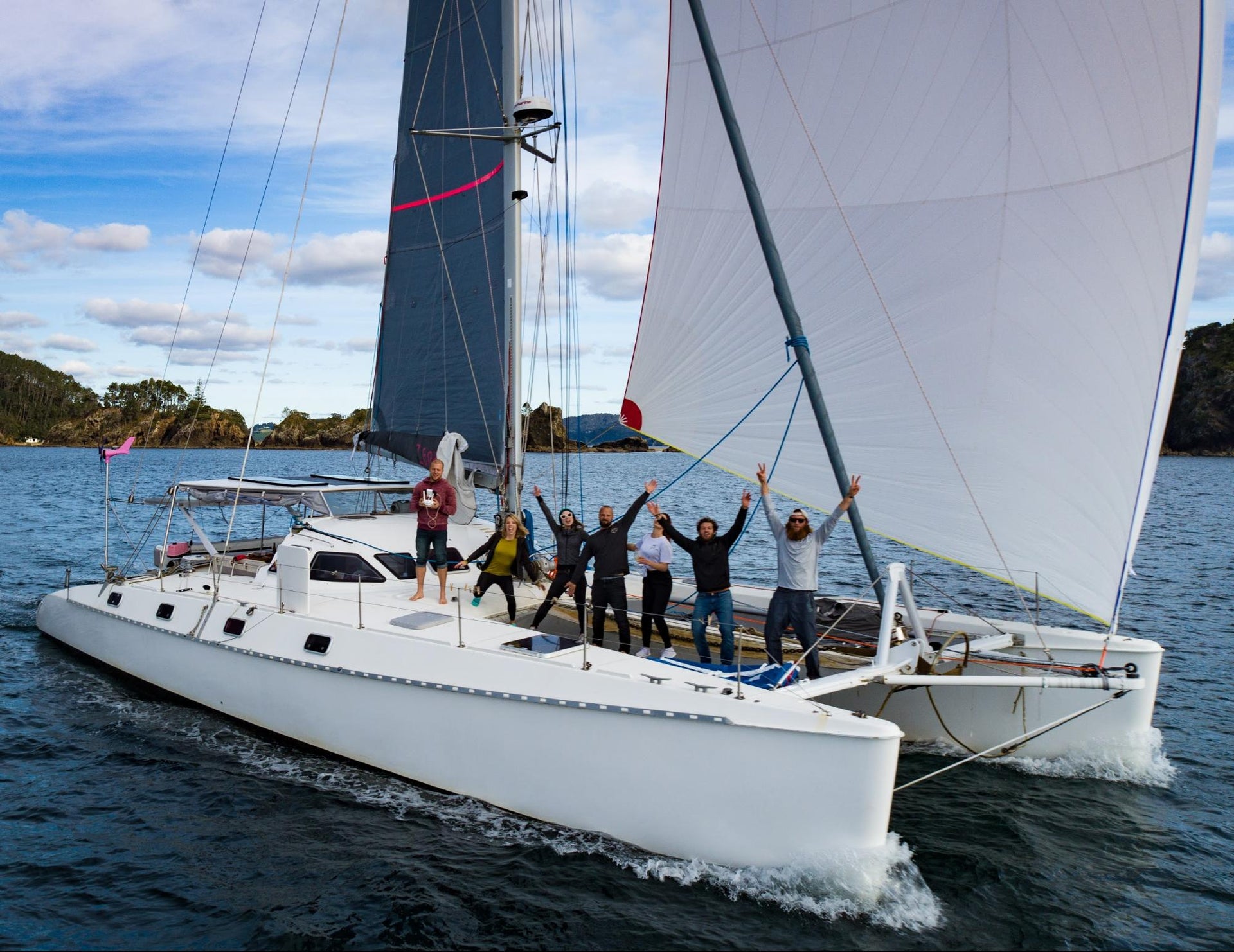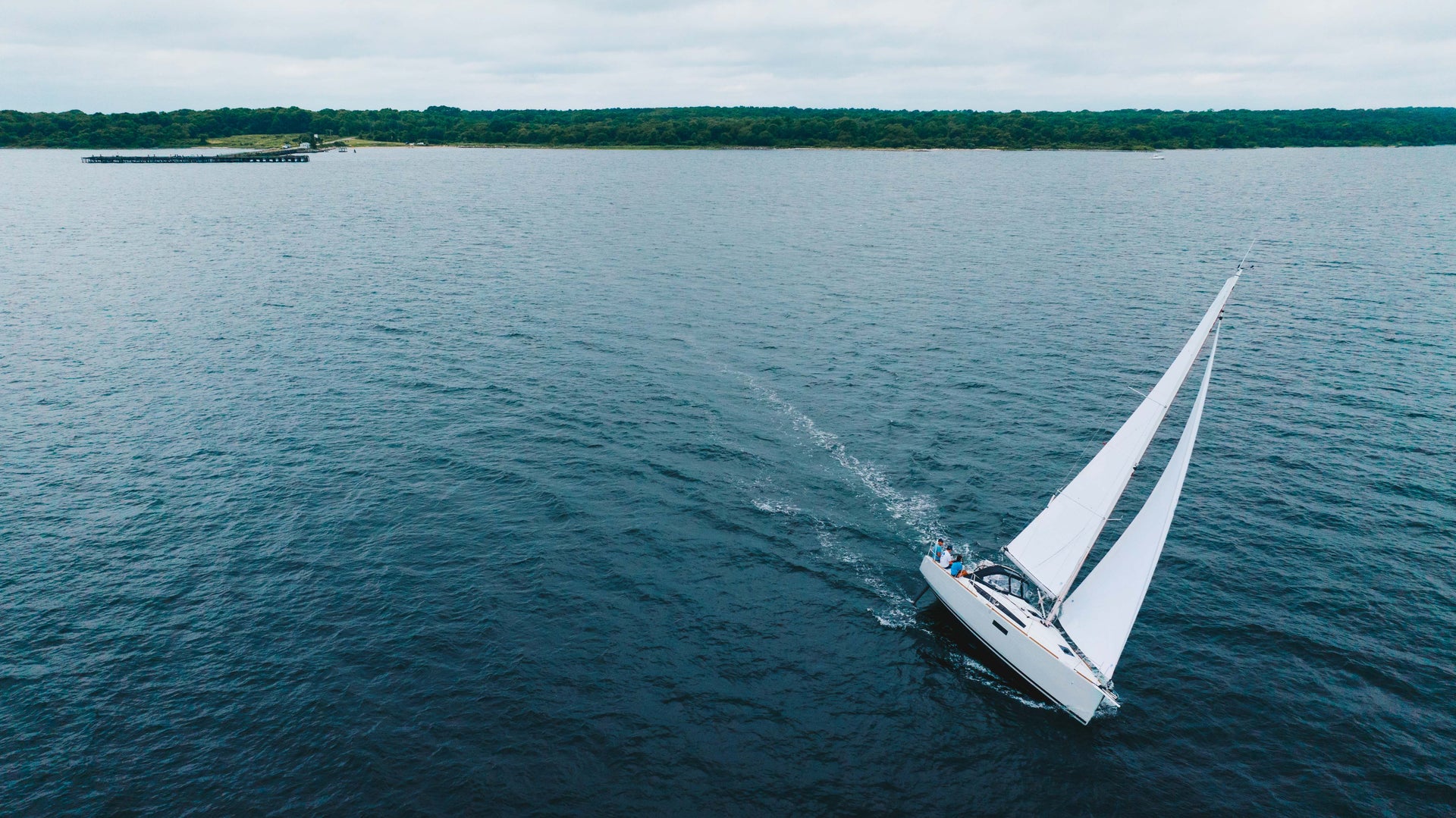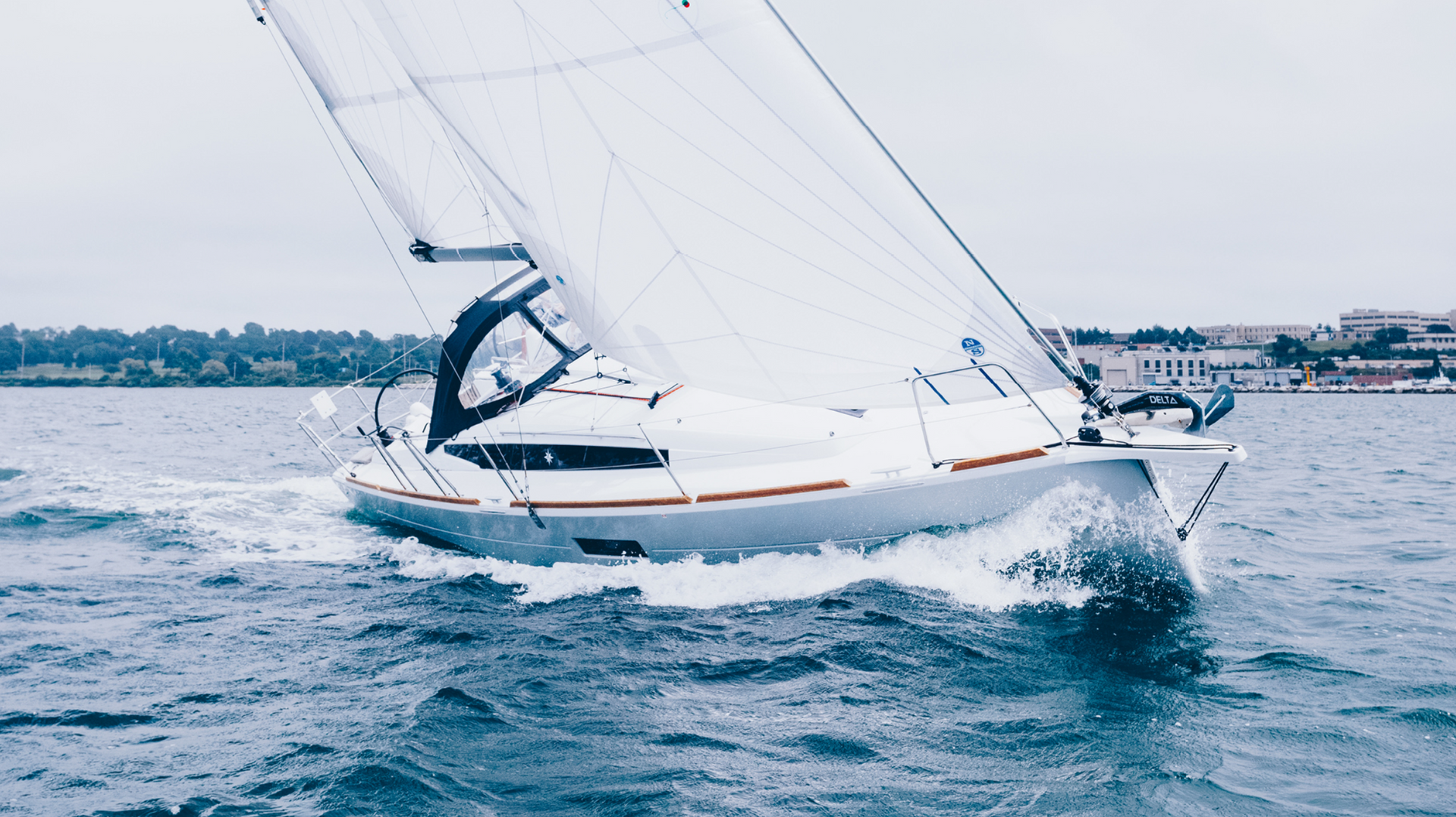FIRST HOIST ON ZEPHYR
FIRST HOIST ON ZEPHYR
A New Kite Makes All The Difference

Zephyr is an Outremer 55, equipped with a 3Di ENDURANCE square top mainsail, which currently has 7,000 miles on it. She also sports a 3Di OCEAN genoa, and has recently acquired a brand new NPC Downwind masthead asymmetric. Boat owner and captain, Eric Laakman, has worked closely with sail expert Matt Steven in Auckland, New Zealand and San Francisco sail expert Seadon Wijsen to optimize Zephry’s sail plan. He credits both for top notch service and expertise to get him ready to take on offshore distance sailing.
After three months of lying in wait in the sail locker, Zephyr hoisted their brand new, massive 211 sq meter North asymmetric spinnaker for the first time, and were in awe from the moment the kite was made. Eric was eager to see the new kite in action and was beyond satisfied with what he saw after their first hoist.
Winter sailing in New Zealand is on the windy side, which means there’s no real need for light air sails. Every now and then, you’ll get an odd light air day, but even so, conditions rapidly change which in most cases means hoisting your kite is not necessarily the most prudent decision, especially when you’re on the water shorthanded. “For me,” says Eric, “Patience is key, as quick maneuvers while shorthanded are not always easy to pull off.”
“The day of Zephyr’s first hoist, we had the perfect conditions on the Bay of Islands, especially for winter. With 10-12 knots, the breeze was strong enough to keep blowing us back to where we started. Never mind that most on board were a few cocktails deep into the afternoon!”
Since Eric has owned the boat, he’s seen his fair share of spinnakers on the foredeck. “Typically they’d fall into two categories,” he said. “Either they were too small and had a narrow range or they were useful verses simply using the working sails. We’ve also tried used sails before, but they were never quite the right fit for the boat.” Multihulls are made for fast off-wind sailing and Eric appreciates the importance of having the right sails to get the job done. “If you really want to go fast downwind in light conditions on a catamaran that can pull the wind forward, you want your spinnaker to fit just right.”
“Before the sail was cut,” Eric said,” I had a chance to sit down with North sail designers and experts in Auckland, New Zealand. It was great to know exactly what I would be getting, as well as discuss my options for the design. While 1.5 oz nylon was used in the panels that would typically see higher loads, we decided to go with a lighter material, 0.75 oz, for the remaining panels. The goal of this sail was to get Zephyr moving in the lightest of downwind conditions, and the weight savings on the sail would give it a few knots of extra range at the low end. I chose the color white, not just for the classy aesthetics, but also for the best durability given that some of the panels were lighter cloth weight.”
Low and behold, the first launch out of the sock went surprisingly smooth. Without really doing much adjusting or trimming, we immediately hit 8 knots. I set the autopilot to hold a constant angle to the wind at 110 AWA. In 12 knots of true wind, our true sailing angle was 150 degrees –meaning we were pulling the wind forward by a full 40 degrees. I’m used to this on a beam reach with a code zero, but not while using an asymmetric spinnaker. Our VMG downwind was nearly 60% of the TWS. It was unreal! I’m looking forward to experimenting by floating the tack line to get a little more fullness from the luff and more rotation. By doing this, we’ll get even more power out of the sail in the lighter conditions.
“As we awed in the size of the new kite, we mixed up another batch of Dark and Stormy’s, kicked back, and took in the view as we flew past other sailboats that were motoring back into the harbor.”




























